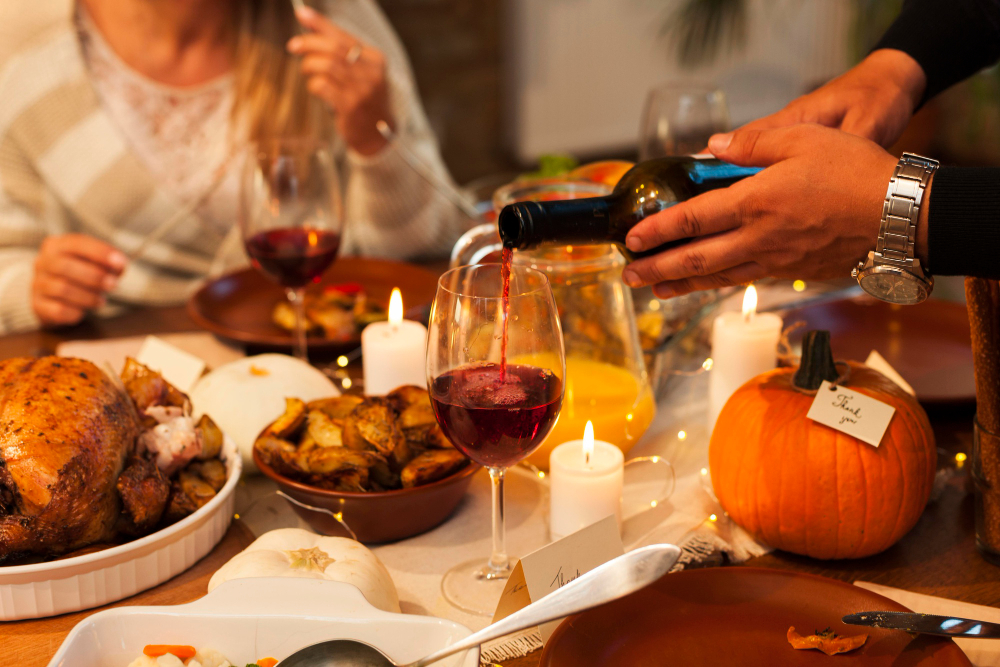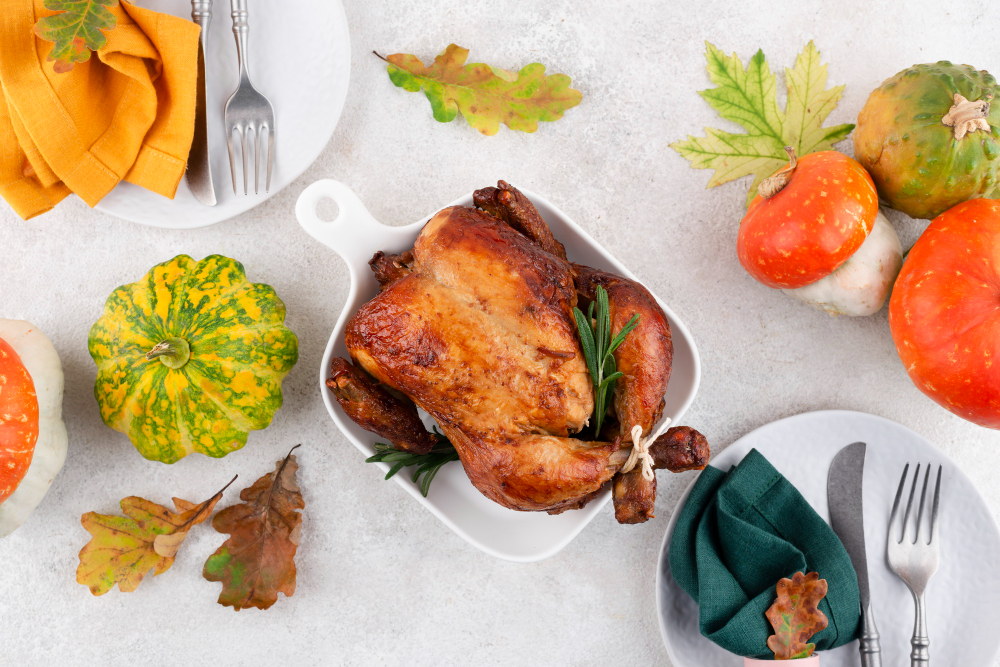Thanksgiving Day in Canada: What You Need to Know
Thanksgiving Day is one of those special moments in the Canadian calendar when families and friends pause to share gratitude, delicious food, and time together. In 2025, Canadian Thanksgiving fell on Monday, October 13.
While the holiday is familiar to most, its story, traditions, and celebrations often surprise people when they look a little closer. In this article, we’ll discover the history of the Thanksgiving Day in Canada, how it differs from the American holiday, the classic dishes Canadians enjoy, and inspiring ways to make the most of the occasion.
History of Thanksgiving in Canada
Thanksgiving in Canada has roots that go back centuries. In 1578, English explorer Martin Frobisher held a thanksgiving ceremony in present-day Nunavut after surviving a dangerous voyage—often seen as the first recorded Canadian Thanksgiving. Later, around 1606, French settlers under Samuel de Champlain organized harvest feasts with the Mi’kmaq, known as the Order of Good Cheer.
The tradition evolved over time, and in 1879 Canada declared Thanksgiving a national holiday. The date of the Thanksgiving Day changed several times until 1957, when Parliament officially set it as the second Monday in October, aligning the celebration with the harvest season across most of the country.

How Is Canadian Thanksgiving Different from the U.S.?
At first glance, Canadian and American Thanksgiving look very similar: families gather, share a big meal, and give thanks. But when you look a little closer, you’ll notice that the two holidays have different origins, traditions, and even timing.
Date
Thanksgiving in Canada is celebrated on the second Monday of October. The timing matches the country’s shorter growing season and earlier harvest, giving families a chance to celebrate before winter sets in.
In the United States, Thanksgiving falls on the fourth Thursday of November. The later date fits the country’s longer harvest season and is often seen as the unofficial start of the Christmas holidays.
Origins
In Canada, the earliest recorded Thanksgiving goes back to 1578, when explorer Martin Frobisher gave thanks for safe passage across the Atlantic. Over time, this merged with European harvest traditions and Indigenous practices of gratitude for the land.
In the United States, the story is tied to the 1621 feast between the Pilgrims and the Wampanoag people in Plymouth, Massachusetts. It grew into a holiday of national unity during the 19th century, especially after Abraham Lincoln declared it a federal holiday in 1863.
Traditions
In Canada, Thanksgiving Day traditions tend to be a bit more low-key. Families might enjoy a cozy meal, go hiking, or spend the long weekend at the cottage.
In the U.S., Thanksgiving often comes with large parades (like the Macy’s Parade in New York City), Black Friday shopping the next day, and a bigger emphasis on nationwide celebration.
Sports
In Canada, football is a big part of the long weekend, with the CFL (Canadian Football League) featuring special Thanksgiving matchups that fans look forward to each year.
In the United States, NFL football dominates the holiday. Watching the games has become as traditional as the turkey itself, with millions tuning in while enjoying their Thanksgiving feasts.
What to Eat for Thanksgiving?
Thanksgiving just wouldn’t feel right without a table full of comforting dishes that bring everyone together. Here are some of the most loved dishes that make Canadian Thanksgiving special.
Roast Turkey and Stuffing
For most households, a golden roast turkey is the highlight of the meal. It’s often seasoned with herbs like rosemary and thyme and served with homemade gravy. The stuffing varies from home to home—some prefer a simple bread and onion mix, while others add apples, cranberries, or sausage for extra richness.

Mashed Potatoes and Gravy
Creamy mashed potatoes are the ultimate comfort food, especially when topped with a generous pour of turkey gravy. Some families mix in roasted garlic or cream cheese for a smoother, more indulgent taste.
Cranberry Sauce
A bright, tangy cranberry sauce cuts through the richness of the other dishes and adds a beautiful color contrast to the plate. Many people enjoy making it from scratch with fresh cranberries and a hint of orange zest.
Pumpkin Pie and Desserts
No Thanksgiving meal is complete without dessert, and pumpkin pie reigns supreme. The creamy filling spiced with cinnamon and nutmeg captures the flavor of autumn in every bite. Some households also serve apple pie, butter tarts, or pecan pie for variety.
Regional Favorites
Canadian Thanksgiving tables often reflect local flavors. In Quebec, tourtière (a seasoned meat pie) is a beloved addition. In the Maritimes, seafood dishes like chowder or baked salmon sometimes replace the traditional turkey. On the Prairies, you might find wild rice salad or bannock bread inspired by Indigenous recipes.
How to Celebrate Thanksgiving Day?
Thanksgiving in Canada is more than a meal. It’s about slowing down, sharing moments, and making the most of the season. Here are some simple, meaningful ways to celebrate.
Share a Harvest Feast
A hearty meal remains at the heart of Thanksgiving. Roast turkey, creamy mashed potatoes, and pumpkin pie are must-haves, but adding a few personal touches can make the day more memorable. In Atlantic Canada, seafood chowder often joins the table; in Quebec, a rich meat pie (tourtière) brings a taste of tradition.
You can also make the dinner more interactive—set up a “gratitude jar” where guests write what they’re thankful for, or plan a mini tasting table with regional Canadian dishes like butter tarts from Ontario or Saskatoon berry pie from the Prairies.
If you’re hosting away from home—perhaps at a cabin or in your backyard—having stable power keeps the celebration stress-free. The EcoFlow DELTA Pro 3 Portable Power Station (UL9540 Certificated) is a smart choice for powering cooking appliances, coffee makers, music systems, and outdoor lighting.
EcoFlow DELTA Pro 3 Portable Power Station (UL9540 Certificated)
Spend Time Outdoors
Since Thanksgiving Day holiday arrives right in the middle of peak autumn colors, it’s the perfect excuse to head outside.
Exploring nearby hiking trails is a refreshing way to balance out a big holiday meal. Try Ontario’s Bruce Trail for dramatic cliffs, Nova Scotia’s Cape Split Trail for coastal views, or British Columbia’s Panorama Ridge for mountain scenery.
Some families like to combine outdoor time with giving back—volunteering at a local food bank, helping with a community cleanup, or delivering homemade treats to neighbors can add a meaningful touch to the day.
If you’re planning a picnic, think about what power option suits you best: portable power station vs power bank. A power bank is perfect for phones or cameras on short trips, while a portable power station can handle larger items like mini-fridges, lanterns, or Bluetooth speakers for an all-day outing.
Watch or Play Sports
Sports are part of Thanksgiving tradition for many Canadians. Some tune in to the CFL’s Thanksgiving Day Classic, while others organize friendly matches of soccer or touch football in the yard.
You can even create your own “Thanksgiving Challenge,” where everyone joins in on a fun backyard activity—like a three-legged race, bean bag toss, or trivia about Canadian history and traditions.
For a livelier setup, host a tailgate party—bring a portable grill, blankets, and warm drinks, and enjoy the game together under the autumn sky.
A portable power station makes it easy to keep things running smoothly. It can power a small TV or projector for outdoor viewing, keep music going, and charge phones or lights after sunset.
Conclusion
Thanksgiving Day is a time to share food, enjoy traditions, and spend quality time with family and friends. This holiday in Canada carries its own history, customs, and flavour, from classic turkey dinners to outdoor activities and sports. However it is celebrated, the purpose remains the same—pausing to appreciate the season and the people around the table. For gatherings at home or outdoors, explore EcoFlow portable power solutions to keep celebrations running smoothly.
FAQs
Why is Thanksgiving Day celebrated?
Thanksgiving Day is celebrated as a way to express gratitude for the harvest and the year’s blessings. In Canada, the tradition blends several influences. Indigenous communities had long held ceremonies to give thanks for the bounty of the land, marking the seasons through food, gatherings, and rituals. Later, European settlers added their own customs, such as Martin Frobisher’s 1578 ceremony to thank God for safe passage through dangerous seas, and Samuel de Champlain’s “Order of Good Cheer” feasts in New France. Over time, these influences shaped a national holiday centred less on exploration and more on family, food, and reflection. Today, it is celebrated with meals, outdoor activities, and time spent appreciating what truly matters.
Is Thanksgiving on the 24th every year?
Thanksgiving is not tied to a single calendar date like Christmas or New Year’s Day. In Canada, it always takes place on the second Monday in October, which means the date shifts from year to year. Sometimes it may fall earlier in the month, and other years a bit later, depending on how the calendar lands. In the U.S., the holiday follows a different schedule and is celebrated on the fourth Thursday of November, which also changes annually. This flexible timing allows both countries to align the holiday with the harvest season, making it more connected to nature and seasonal rhythms rather than a fixed day like the 24th.
Why do Canadians celebrate Thanksgiving?
Canadians celebrate Thanksgiving for a mix of historical and cultural reasons that evolved over centuries. Early Indigenous practices of giving thanks for the harvest laid the foundation. In 1578, Martin Frobisher and his crew held a thanksgiving ceremony after surviving a treacherous voyage, which many historians consider the first recorded Canadian Thanksgiving. Later, French settlers in New France organized feasts with Indigenous communities to share food and goodwill. By 1879, Canada declared Thanksgiving a national holiday, though the date shifted until it was set permanently in 1957 on the second Monday in October. Today, Canadians celebrate Thanksgiving as a time to mark the end of the harvest season, share meals like turkey and pumpkin pie, and take a pause to appreciate family, health, and the abundance of the year.